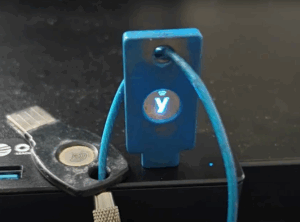Losing an employee is rarely a pleasant experience. Whether an employee resigns voluntarily or is fired involuntarily, the departure presents various challenges. The process of terminating an employee involves not only the emotional and managerial aspects but also significant concerns related to security and access to company data. Properly managing these aspects is crucial to safeguarding corporate information. Here are some key considerations regarding password management and data access in the event of both voluntary and involuntary terminations.
Preparing for Employee Termination
When preparing for an employee’s termination, it is essential to have a well-defined process in place to ensure that no security measures are overlooked. This includes changing passwords and revoking access to company systems and data. Planning is crucial in this regard, as almost all terminations can be anticipated. By having a clear procedure, you can avoid potential conflicts and security breaches.
Before the termination meeting, compile a comprehensive list of all access points, including passwords, access cards, keys, and any other credentials the employee might possess. It is unwise to disable these access points before the meeting, as this can lead to a confrontational situation if the employee finds out their access has been revoked prematurely. Instead, designate a trusted individual to handle the cancellation of access during the termination meeting itself.
Handling Voluntary Terminations
Different companies have varying policies for handling resignations. In many cases, an employee who resigns is allowed to work through a notice period, typically two weeks. During this time, it is crucial to assess the risk of the employee potentially engaging in malicious activities. This risk assessment is context-dependent and should be based on the employee’s role, access to sensitive information, and their behavior leading up to the resignation.
For some roles, it might be prudent to restrict the employee’s access immediately, even if they are allowed to work during their notice period. This can be done by limiting their permissions or monitoring their activities more closely. However, if there is no significant risk, the employee can continue to work as usual until their departure.
In scenarios where the company decides to have the employee leave immediately upon resignation, a more urgent approach is required. Ensure that all access points are disabled before the employee leaves the premises. This might seem stringent, but in today’s digital age, the potential for data theft or sabotage is much higher than it was in the past. Thirty years ago, a disgruntled employee might have walked out with boxes of files; today, they could steal gigabytes of data on a small thumb drive or execute harmful actions remotely.
Explore our Managed Service Offerings
Worcester’s Top Managed Service Provider
Handling Involuntary Terminations
Involuntary terminations require a delicate and systematic approach to ensure both legal compliance and security. The progressive discipline process often precedes the actual termination, providing a trail of documentation and reasoning for the final decision. However, once the decision is made, the focus shifts to executing the termination smoothly and securely.
During the termination meeting, it is crucial to communicate clearly and professionally, explaining the reasons for the termination and the next steps. Simultaneously, the person responsible for IT security should be actively disabling the employee’s access to all systems. This includes changing passwords for email accounts, CRM systems, cloud storage, and any other platforms the employee had access to.
Additionally, collect any company property such as laptops, smartphones, and access cards during the meeting. This ensures that the employee does not retain any physical means of accessing company resources.
Post-Termination Security Measures
After the employee has left, conduct a thorough review to ensure that no access points have been overlooked. This involves checking all systems the employee had access to and confirming that their credentials have been fully revoked. It’s also advisable to monitor systems for any unusual activity that might indicate attempted unauthorized access.
Updating passwords for systems and applications the employee had access to is crucial. This not only prevents the former employee from accessing these systems but also protects against any potential security breaches that might have occurred if the employee shared their credentials with others, either knowingly or unknowingly.
Discover our IT Solutions for Your Industry
Worcester’s Top Managed Service Provider
Best Practices for Secure Termination Processes
Pre-termination Planning
Develop a comprehensive checklist for terminations that includes all necessary steps and access points to be addressed.
Clear Communication
Ensure that the termination meeting is handled professionally and respectfully, providing clear reasons and next steps.
Immediate Action
Assign a trusted individual to handle the immediate revocation of access during the termination meeting.
Post-termination Review
Conduct a thorough review to ensure all access points have been addressed and monitor for any unusual activity.
Consistent Policies
Maintain consistent policies for both voluntary and involuntary terminations to ensure security protocols are always followed.
Employee terminations, whether voluntary or involuntary, present significant challenges, particularly regarding data security. By having a clear, well-defined process in place, companies can ensure that all necessary steps are taken to protect sensitive information. This involves pre-termination planning, immediate action during the termination meeting, and thorough post-termination reviews. By following these best practices, companies can mitigate the risks associated with employee departures and maintain the security of their corporate data.



